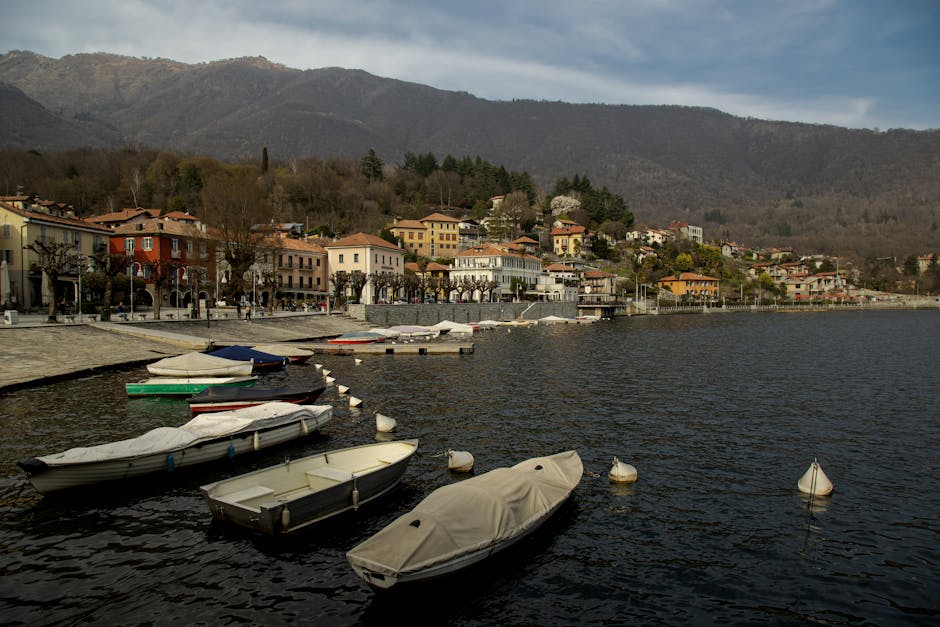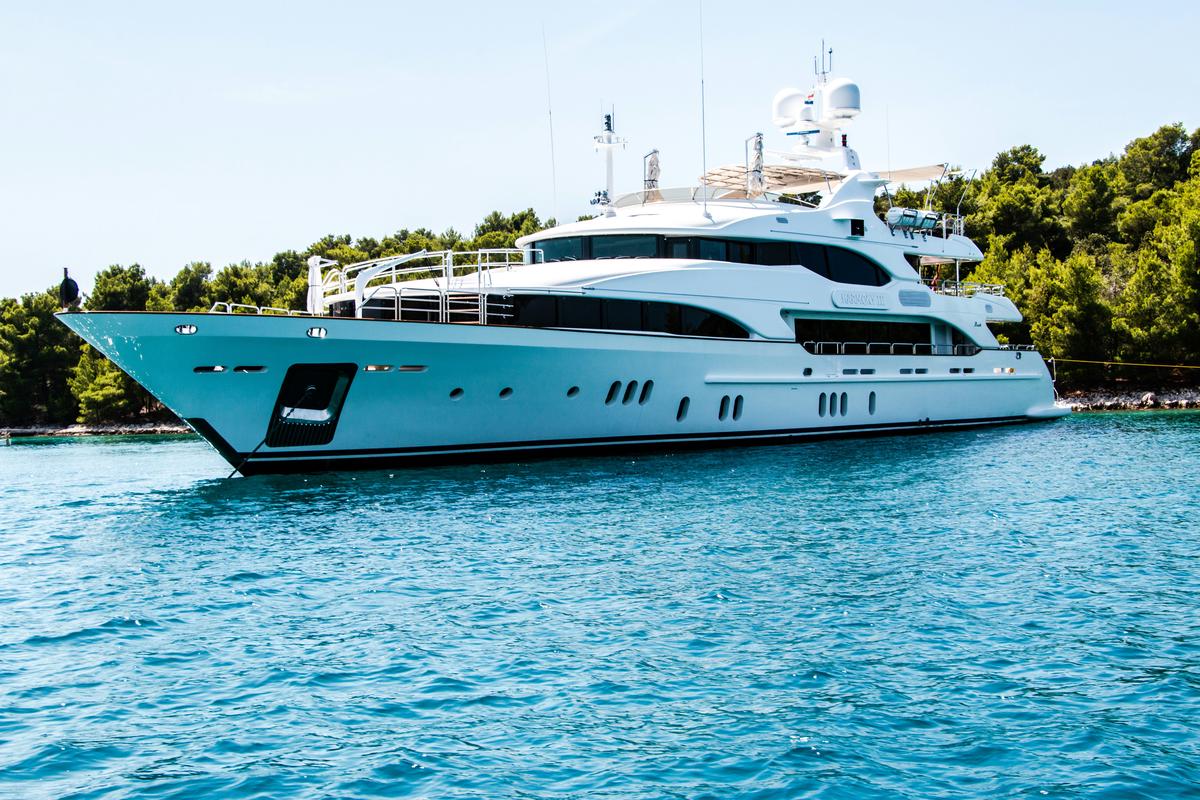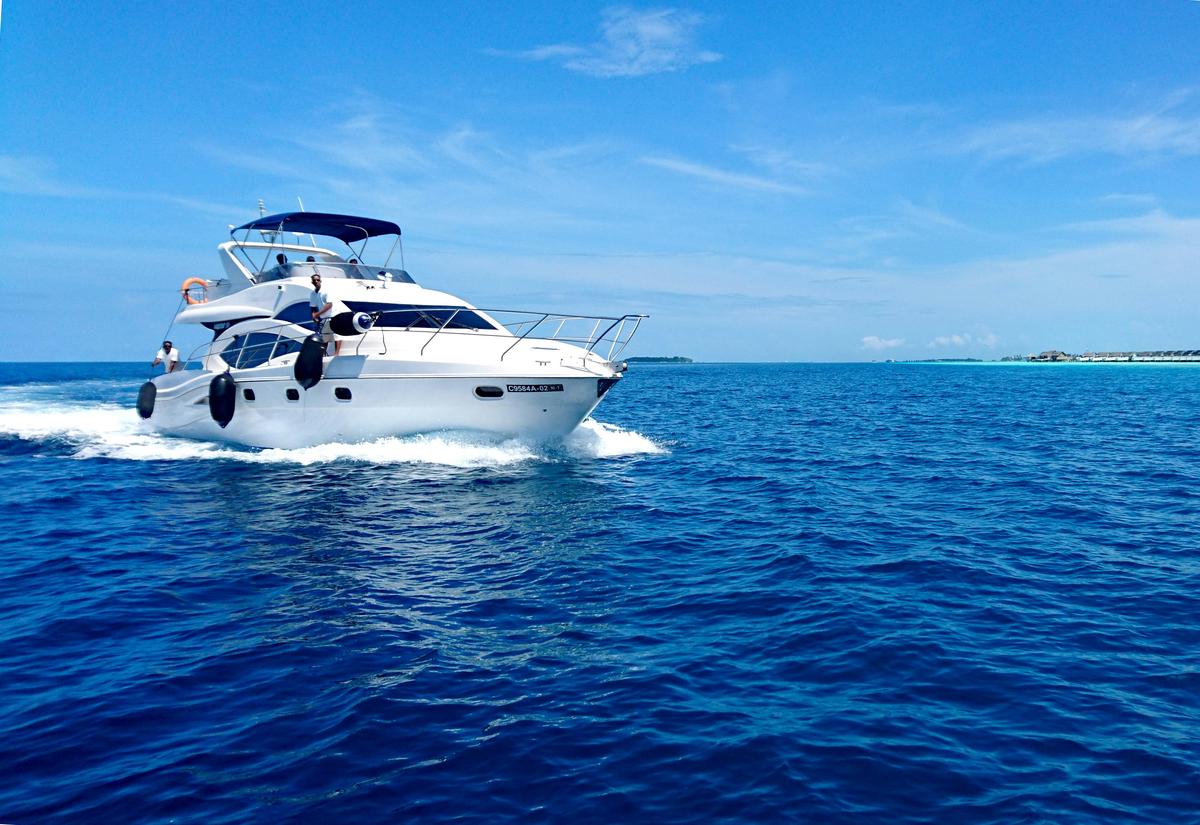Stepping into the realm of yachting presents a captivating journey between two worlds: the traditional allure of sailing yachts and the modern luxury of motor yachts. Each offers a distinct experience on the water, shaped by design, performance, and an unwavering commitment to comfort. As we navigate these waters, we’ll uncover how these vessels cater to different tastes and preferences, setting the stage for an unforgettable maritime adventure.
Design and Aesthetics
When you step aboard a sailing yacht, it’s like being transported into a bygone era of maritime elegance. The tall masts and billowing sails command an undeniable presence, embodying the spirit of adventure. These vessels are often crafted with a keen eye on tradition, featuring polished wood interiors, gleaming brass fittings, and sumptuous textiles that hark back to a time when the journey was as important as the destination. The decks are designed to be functional yet beautiful, a nod to their primary propulsion method—the wind. This isn’t just a means of travel; it’s a call back to the romance of the sea.
Switch gears to a motor yacht, and you’ll find yourself surrounded by modern luxury and technology. These yachts are marvels of engineering, designed for speed and comfort. The lines of a motor yacht are sleek and streamlined, built to cut through the water with ease. The aesthetic here leans towards contemporary opulence, with expansive use of glass for panoramic views, state-of-the-art entertainment systems, and spacious decks equipped with everything from sun loungers to hot tubs. Interiors might showcase minimalist designs, high-end finishes, and touches that reflect the latest trends in luxury living. It’s about reaching your destination in style, with the sea as your highway.
On a sailing yacht, space is utilized with grace. Due to their design for wind propulsion, sailing yachts often have narrower hulls. This creates cozy living areas that encourage bonding among passengers. The cabins and communal spaces hum with an intimate ambiance, where every inch serves a purpose. Even so, designers have mastered the art of incorporating luxury into these compact spaces, ensuring that comfort is never compromised.
Motor yachts, by contrast, boast vast interior volumes and deck spaces that can rival chic hotels. These vessels offer an abundance of room for amenities such as beach clubs, tender garages, multiple dining areas, and dedicated entertainment zones. The ability to spread out more allows for a level of personalization in décor and layout that can satisfy a variety of tastes and requirements. From elegantly understated to extravagantly ornate, the interiors can be tailored to reflect the owner’s personality with unparalleled flexibility.
Diving deeper into aesthetics, sailing yachts often maintain a connection to nautical history through their design elements. You might find charts of historic voyages as part of the décor, brass portholes that open to the ocean breeze, and timeless naval architecture. This adherence to maritime heritage lends sailing yachts an inherent charm that appeals to those who love the lore of the seas.
Motor yachts, meanwhile, serve as a canvas for innovation and extravagance. Imagine infinity pools that merge with the horizon, fold-out balconies that bring you closer to the water, and lighting systems that set the mood from dusk till dawn. In essence, motor yachts are floating embodiments of modern luxury, where the possibilities for customization are as vast as the oceans they navigate.
Each type of yacht tells its own story through design and aesthetics – one whispers tales of wind and waves, while the other speaks boldly of power and progress. Whether charmed by the nostalgic appeal of sailing yachts or drawn to the sleek sophistication of motor yachts, enthusiasts can find their preferred blend of style and substance on the seas.

Performance and Experience
Embarking on a yachting journey is a choreographed dance between man, machine, and the elements — but the experience diverges sharply when comparing the graceful ballet of a sailing yacht with the assertive march of a motor yacht. Sailing, by its very nature, invites a rhythm dictated by the wind and waves. The feel of the tiller in hand, the sight of sails billowing against a clear sky, and the art of catching the perfect gust offer a thrill that is as old as time. The methodical nature of harnessing wind power for navigation not only slows down the journey but enriches the connection between the sailor and the sea, creating an immersive experience where each mile traveled feels earned.
Conversely, motor yachts promise speed and efficiency. With engines roaring to life at the push of a button, destinations that were once a day’s sail away become reachable in mere hours. This rapid pace changes the dynamic of yachting from a journey to be savored to a destination to be swiftly reached. The continuous hum of engines and the ability to glide effortlessly through calm and rough seas alike redefine one’s relationship with the sea from one of coexistence to dominance. Here, the sea becomes a road to be traversed, making the entire yachting experience more about where you can go rather than how you get there.
This duality presents unique advantages depending on the voyager’s preferences. Those who yearn for a slowing down of time might find solace aboard sailing yachts, where the journey itself is part of the destination. The act of sailing demands attentiveness and skill, introducing an element of challenge and personal achievement into each trip. Celebratory moments come not only from reaching new ports but from successfully navigating coastal waters using only sails.
On the flip side, motor yachts cater to those seeking expedience or needing to cover extensive maritime distances efficiently. The straightforwardness of engine-powered travel allows more leisure time aboard, with less hands-on participation required from the guests. It becomes possible to map out more ambitious itineraries, exploring multiple destinations within a compressed timeframe — unthinkable for their sailing counterparts without favorable winds.
Moreover, the purr of engines introduces a steadiness that many find comforting. Unlike sailing, where winds can unpredictably shift and challenge even the most seasoned sailors, the predictability of a motor yacht provides a stable platform for both relaxation and entertainment. This steadiness extends into aspects like dining and onboard activities, where the absence of sudden tilts and shifts ensures smoother operations.
Yet, despite these differences, at the heart of both experiences lies a shared essence — the unbridled joy of being at sea. Whether it’s the wind guiding your journey or the might of engines, yachting in any form offers a unique perspective of the world, one wave at a time. In essence, the choice between sailing and motoring doesn’t detract from the quintessential opulence of yachting; it merely alters the tempo.

Luxury and Comfort
When you step into the world of luxury yachting, the element of dining at sea plays a significant role in the overall onboard experience. On sailing yachts, meals can transform into memorable events under the stars with the sound of waves serenading diners. The intimacy of dining spaces on sailing yachts encourages gatherings that feel personal, with chefs often using the catch of the day to whip up culinary delights that pay homage to the sailing heritage. Every bite promises not just flavors but stories of the sea.
In contrast, motor yachts offer a broader spectrum of dining facilities, ranging from formal dining halls illuminated by bespoke chandeliers to casual open-air grills on the deck. These yachts are designed to cater to an array of culinary preferences, mirroring the diversity and opulence one might find in high-end restaurants on land. The possibilities for theme nights, extravagant buffet spreads, and even personal chef experiences make dining on motor yachts an endless adventure in gastronomy.
Accommodation aboard yachts is another area where luxury and comfort are manifested differently. Sailing yachts often imbue cabins with a nautical charm that reflects the timeless allure of the sea. Use of rich woods, brass fittings, and marine-themed decor lends these sleeping quarters a warm, cozy vibe that resonates with the romantic souls drawn to sailing. Despite the somewhat limited space, clever design ensures maximum functionality and comfort.
Motor yachts, on the other hand, can rival luxury hotel suites with their accommodations. Featuring grand master staterooms with panoramic sea views, en-suite marble baths, walk-in closets, and at times, private balconies, these floating palaces leave no stone unturned in delivering lavish comfort. The interior ambiance can range from ultra-modern minimalistic to classic opulence, with meticulous attention to detail evident in every facet of design and decor.
The distinction in amenities between sailing and motor yachts further highlights their unique approaches to luxury. Sailing yachts tout eco-friendly features like wind-powered propulsion and often focus on activities that resonate with the natural elements, like star gazing, snorkeling, or even sailing classes for the guests interested in learning the ropes. It’s about savoring the simple pleasures that life at sea offers.
Conversely, motor yachts serve as hubs of entertainment and relaxation, equipped with state-of-the-art cinemas, gyms, spa facilities, and even inflatable water parks. The emphasis is on providing an array of leisure options that ensure guests can find as much enjoyment onboard as they would exploring on land. These yachts cater to every whim, whether it’s lounging in a Jacuzzi contemplating the horizon or enjoying a movie night in an outdoor cinema under the stars.
In gatherings and celebrations, both yacht types shine, albeit in different hues. On sailing yachts, events tend to take on a more intimate and organic character. Think cocktails at sunset on the deck or a small wedding ceremony with the sails billowing softly in the wind. There’s an inherent sense of close-knit camaraderie and charm.
Motor yachts offer an unparalleled setting for hosting grand events. With expansive decks and sophisticated multipurpose areas, they are perfectly suited for deluxe weddings, exclusive parties, or corporate gatherings. The level of service and lavish settings can transport guests to a world of refined elegance and unparalleled splendor.
In essence, choosing between sailing and motor yachts boils down to one’s perception of luxury and how they wish to experience serenity and exhilaration at sea. Whether drawn to the graceful ballet of a sailing yacht moving with the wind or the powerful allure of a motor yacht cutting through the waves, each journey promises unforgettable moments wrapped in the lap of luxury.

Environmental Impact
Sailing yachts stand out as models of environmental friendliness mainly due to their reliance on wind power. This natural force propels them across the water, significantly reducing the need for fossil fuels. As a result, sailing yachts have a much lower carbon footprint when compared to their motor-driven counterparts. They emit fewer greenhouse gases and pollutants into the atmosphere and oceans, aligning more closely with eco-conscious ideologies.
On the other side, motor yachts require diesel or gasoline to operate their engines, leading to higher fuel consumption and emissions. The combustion of these fuels releases carbon dioxide, a greenhouse gas that contributes to global warming, along with sulfur oxides and nitrogen oxides, which can cause air and water pollution. These emissions not only affect the environment but can also harm marine life and contribute to the acidification of our oceans.
Another point to consider is the noise pollution generated by motor yachts, which can disrupt marine ecosystems. The constant rumble of engines can interfere with the communication, feeding, and navigation of marine animals, such as whales and dolphins. Sailing yachts, in contrast, offer a quieter option that harmonizes better with the natural surroundings, minimally impacting the maritime environment.
It’s also worth mentioning the advancements in sailing yacht technology that further diminish their environmental impact. Many modern designs incorporate eco-friendly materials and renewable energy sources, like solar panels and hydro generators, to power onboard systems. This reduces the reliance on diesel-generated power for electricity, further decreasing the yacht’s ecological footprint.
Considering fuel efficiency, sailing yachts generally fare better. The fuel required to power the engines for maneuvering in ports or calm conditions is far less than that needed for a motor yacht to travel the same distance. This efficiency translates into fewer emissions and a reduction in the depletion of non-renewable resources.
In terms of sustainability, some sailing yachts push the envelope by incorporating cutting-edge eco-conscious features, such as underwater turbines that generate electricity while sailing. This innovative approach not only propels the vessels forward using wind power but also harnesses the movement through water to produce clean energy.
When evaluating the overall environmental impact of yachting, it’s clear sailing yachts offer a greener alternative to motor yachts. By leveraging the wind’s power and employing sustainable technologies, these vessels sail closer to the ideal of eco-friendly maritime travel. Engaging with sailing yachts not only minimizes the ecological footprint but also encourages a deeper connection with the natural world, reminding us of our responsibility to protect and preserve our planet’s precious resources.

Cost Considerations
Navigating the finance channel of yacht ownership or chartering can feel like sailing in murky waters. The choice between sailing yachts and motor yachts has significant cost implications not just at the initial purchase but throughout the vessel’s lifespan. Let’s hoist the sail and explore these financial waters further.
For starters, the purchase price can set the tone for your yachting journey. Generally, motor yachts tend to make a larger dent in your bank account compared to their wind-powered counterparts. This price difference is often due to the complex engineering and luxury amenities packed into motor yachts. High-speed engines, stabilizing systems, and opulent interiors contribute to their steep price tag.
Once you’ve keyed into your yacht, ongoing costs come into play. Maintenance for motor yachts typically runs higher than that for sailing yachts. The engines, generators, and sophisticated tech onboard motor vessels need regular professional attention. Sailing yachts, while not free from maintenance needs, usually tally up lower bills, thanks to simpler machinery and the reliance on sails over engine power for movement.
Fuel costs also chart a contrasting course between these two types of yachts. The thirst of motor yachts for diesel makes fuel expenses a significant line item in their operational costs. Sailing yachts, riding on the free winds, exhibit sheer efficiency in this department with minimal fuel usage primarily for docking or maneuvering in no-wind conditions.
Insurance premiums sail in next, often higher for motor yachts due to their greater value and operational risks. Sailing yachts might offer a break in insurance costs, although factors like size, model, and sailing regions can adjust these rates.
Crew salaries present another financial ripple. Motor yachts often demand larger crews skilled in managing the intricate systems aboard. In contrast, sailing yachts can typically be managed with smaller teams, albeit with specific sailing expertise. This distinction leads to additional monthly expenditures for motor yacht owners.
Lastly, consider the depreciation pace. All vessels dip in value over time, but motor yachts may chart a steeper depreciation curve due to their mechanical complexity and higher initial costs. Sailing yachts, possessing timeless appeal and often being seen as classic or enduring, can better hold their valuation in favorable winds.
To cinch the mainsheet, whether chartered for a fortnight’s escape or purchased for a lifetime of sea adventures, yachts wave flags of substantial financial commitment. The decision between harnessing the wind or powering through the waves influences not only your maritime lifestyle but also sails through your finances with differing speed and direction. Each option weighs anchors in its uniqueness, tethered firmly to your personal seafaring dream and how deeply your treasure chest is buried.

Photo by alina_k0906 on Unsplash
In conclusion, the choice between sailing and motor yachts transcends mere preference, touching the core of what individuals seek in their maritime adventures. Whether it’s the charm and challenge of harnessing the wind or the sheer power and luxury of cruising at speed, both paths offer gateways to the sea’s boundless wonders. The most compelling aspect remains the shared joy of yachting, a testament to the enduring allure of life on the water.
Get top-notch content with Writio, the ultimate AI writer! This article was created by Writio.
Leave a Reply